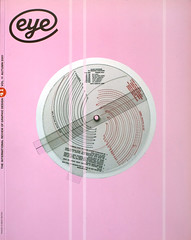Autumn 2001
Savage pens
Stabbed in the Front: Post-war General Elections through Political Cartoons
Alan Mumford<br>University of Kent, £14.95<br><br>They used to say that whoever you voted for, the government always got in, but then came George W. Bush and that was the end of that eternal verity. British politics has yet to lose all integrity but there are worrying signs that the machinery is in place and glistening with oil, just in case an official opposition ever re-emerges. The British tradition of pillorying the great and good seems as essential now as it has ever been - but just how effective is it? Does it work, and has it ever?
What is evident from Alan Mumford’s Stabbed in the Front is that strange things happen when an artist repeatedly draws the same politician. Socialist David Low’s depictions of Churchill make him look almost cuddly. Steve Bell’s John Major, complete with pants on the outside, may have helped lose him the 1997 election but are nowhere near as vicious as his portrayals of Tony Blair.
Bell is said to enjoy complete editorial freedom but, unsurprisingly, most cartoonists follow the editorial line, particularly at election time. Most seem to find this agreeable enough. As left-wing playwright Trevor Griffith wrote in 1974: ‘You’ll bite the hand that feeds you – but you’ll not bite it off.’ Some cartoonists are so zealous in their espousal of the party line they even scare their editors. Derek Jameson, as editor at the Daily Express, described the sloganeering Michael Cummings as ‘slightly to the right of Attila the Hun.’
Such deadening propaganda is rare in British newspapers. It is, in fact, among staff cartoonists that the strangest affiliation occurs: Gerald Scarfe as the Sunday Times’s main cartoonist and Ralph Steadman at the Times. Both were evidently hired for the verve of their work rather than their politics, but it is just at this point that the symbiotic relationship between artist and newspaper starts to smell a little. The message of the newspaper is that this man is so good we will have him whatever. The artist’s message is muddier (it must be stated that Ralph Steadman exonerated himself in 1988 by a gloriously quixotic call for a worldwide cartoonists’ boycott on drawing politicians – starving them of the oxygen of publicity).
While some of the earlier graphic styles in here look somewhat dated, they do not look as dated as some of the new ones. Most stylistic experimentation these days appears wilfully retrograde. Chris Riddell’s laborious cross-hatching evokes Victorian illustrated papers and both Steve Bell and Martin Rowson have more than a hint of Gillray and Cruikshank about them in style and savagery.
This well researched collection covers the fifteen general elections from 1945 to 1997 and it is informative and thorough on both politicians and cartoonists. It is good to see the work of Low, Vicky and Illingsworth in the context of the political era for which their work was made and to see examples of less well known cartoonists.
The question does remain, though: did they actually change anything? When asked the same question, Gerald Scarfe replied: ‘Not one jot.’ Perhaps if the press barons of the past and present are the paper tigers of British political life, then political cartoonists may be seen as their straw dogs.
Richard Kemp, artist, writer, London
First published in Eyeno. 41 vol. 11 2001
Eye is the world’s most beautiful and collectable graphic design journal, published quarterly for professional designers, students and anyone interested in critical, informed writing about graphic design and visual culture. It is available from all good design bookshops and online at the Eye shop, where you can buy subscriptions and single issues.

